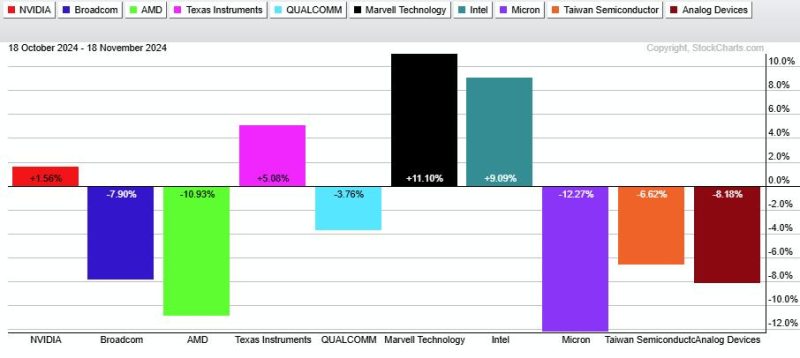Are you an investor fond of emerging market trends and current investment narratives? If yes, then you might be intrigued by the competition currently heating up within the realm of Exchange-Traded Funds (ETFs), especially in the semiconductor sector. While several semiconductor ETFs have captured investors’ attention lately, the spotlight seems to mainly shine on SMH (VanEck Vectors Semiconductor ETF) and SOXX (iShares PHLX Semiconductor ETF). But have you ever wondered why SMH appears to keep a stronger position in comparison to SOXX? Let’s delve deeper into the labyrinth of both these ETFs.
Perhaps one of the primary reasons for this disparity lies in the fundamental structure of these ETFs. The standard rule in investing – diversity reduces risk – tends to apply less to SMH. This might sound counter-intuitive, however, this limited diversification is what haunts SOXX and boosts SMH. With a concentrated approach towards a limited number of holdings, SMH manages to drastically amplify the impact of each stock’s movement on the index.
The factor of consistency also plays a vital role in this situation. While SOXX contains about 30 stock holdings, that number dwindles to only 25 for SMH. The consistency in the latter’s holdings has contributed to its steadiness, while the former grapples with a more variable portfolio.
Furthermore, the geographic distribution of holdings within these ETFs also plays an essential role. Unlike SOXX, SMH has a greater emphasis on non-US semiconductor companies. This broader geographic exposure renders SMH less prone to domestic market volatilities, thereby possibly establishing a safer bet for investors.
However, the most striking difference between these two ETFs rests within their individual stock weightings. SMH has majority holdings in behemoth companies like TSMC, Intel, and ASML, hence certainly capitalizing on their strong performance despite market fluctuations. On the other hand, SOXX seems to more evenly distribute its assets across its holdings, which might lead to sub-optimal performance during bullish trends.
Nevertheless, it’s crucial to consider that both SMH and SOXX have unique strategies which cater to different kinds of investors. SMH seems to be more suitable for those who can stomach volatility for higher possible returns while SOXX could be more appealing to those seeking balanced, systematic exposure to the semiconductor industry.
In conclusion, SMH’s higher performance compared to SOXX can be attributed to its distinctive strategy that focuses on a smaller pool of holdings, more significant non-US exposure, and greater weightage on dominant companies. While these aspects don’t necessarily render one ETF superior to the other, they indeed offer varied avenues for investors to exploit market trends based on their investment aims and risk tolerance.
